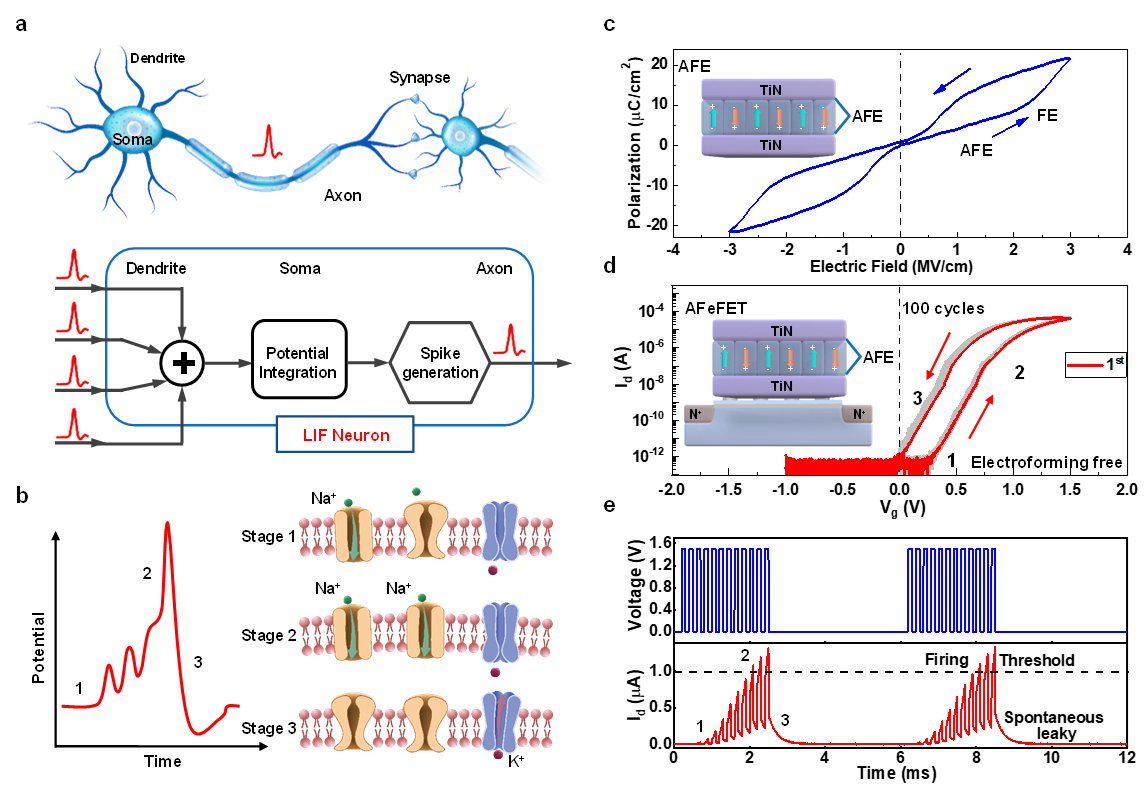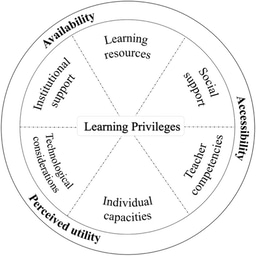Compact artificial neuron based on anti-ferroelectric transistor
Published in Electrical & Electronic Engineering

Nowadays, with the explosive growth of artificial intelligence technology, the traditional von-Neumann computing paradigm gradually becomes powerless due to its bottleneck of "memory wall". The physical separation of memory and data processor results in extra delay and energy consumption during data communication. Brain-inspired neuromorphic computing as a new computing paradigm, integrating memory and computing, provides a new technical route for the development of artificial intelligence technology. In neuromorphic computing, the emulation of biological neurons is pivotal component. Recently, CMOS-based and emerging memristor-based neurons have been demonstrated, and memristor-based neurons are considered a more competitive approach for the future due to their promising bio-plausibility and density. But, there are still many challenges of memristors-based, like limited reliability, bulky capacitors for integration or additional circuits for reset.

a The architecture and processing model of biological neurons. b The integrate and fire dynamics of a biological neuron. c The representative double hysteresis of anti-ferroelectric materials. d The typical transfer curves of the anti-ferroelectric transistors. e The continuous firing events of anti-ferroelectric transistor neurons.
In this work, researchers from the National University of Defense Technology and Fudan University teamed up to implement compact artificial neurons based on Hf0.2Zr0.8O2 anti-ferroelectric transistors. The intrinsic polarization accumulation effect in an anti-ferroelectric transistor implements the integration feature of the neuronal membrane, avoiding using external capacitors and saving the chip area. The spontaneous depolarization effect in anti-ferroelectric transistor emulates the leaky behavior of neurons, saving the hardware overhead of neuron circuits by getting rid of external reset circuits. Moreover, the anti-ferroelectric transistor neuron exhibits low energy consumption, excellent endurance, high uniformity, and high stability. To demonstrate the system application, we further construct a two-layer fully ferroelectric (784×400×10) spiking neural network, combining established ferroelectric transistor synapse, the recognition accuracy on the Modified National Institute of Standards and Technology datasets achieving the maximum as 96.8%. This work provides a more competitive approach to building highly efficient neuromorphic hardware systems.
Our work is published on Nature Communications, at the link:
Follow the Topic
-
Nature Communications

An open access, multidisciplinary journal dedicated to publishing high-quality research in all areas of the biological, health, physical, chemical and Earth sciences.
Related Collections
With Collections, you can get published faster and increase your visibility.
Women's Health
Publishing Model: Hybrid
Deadline: Ongoing
Advances in neurodegenerative diseases
Publishing Model: Hybrid
Deadline: Dec 24, 2025



Please sign in or register for FREE
If you are a registered user on Research Communities by Springer Nature, please sign in